Celestron Inspire 100AZ review: unusual features
This refractor telescope comes with a uniquely designed lens cap that doubles as a universal smartphone mount

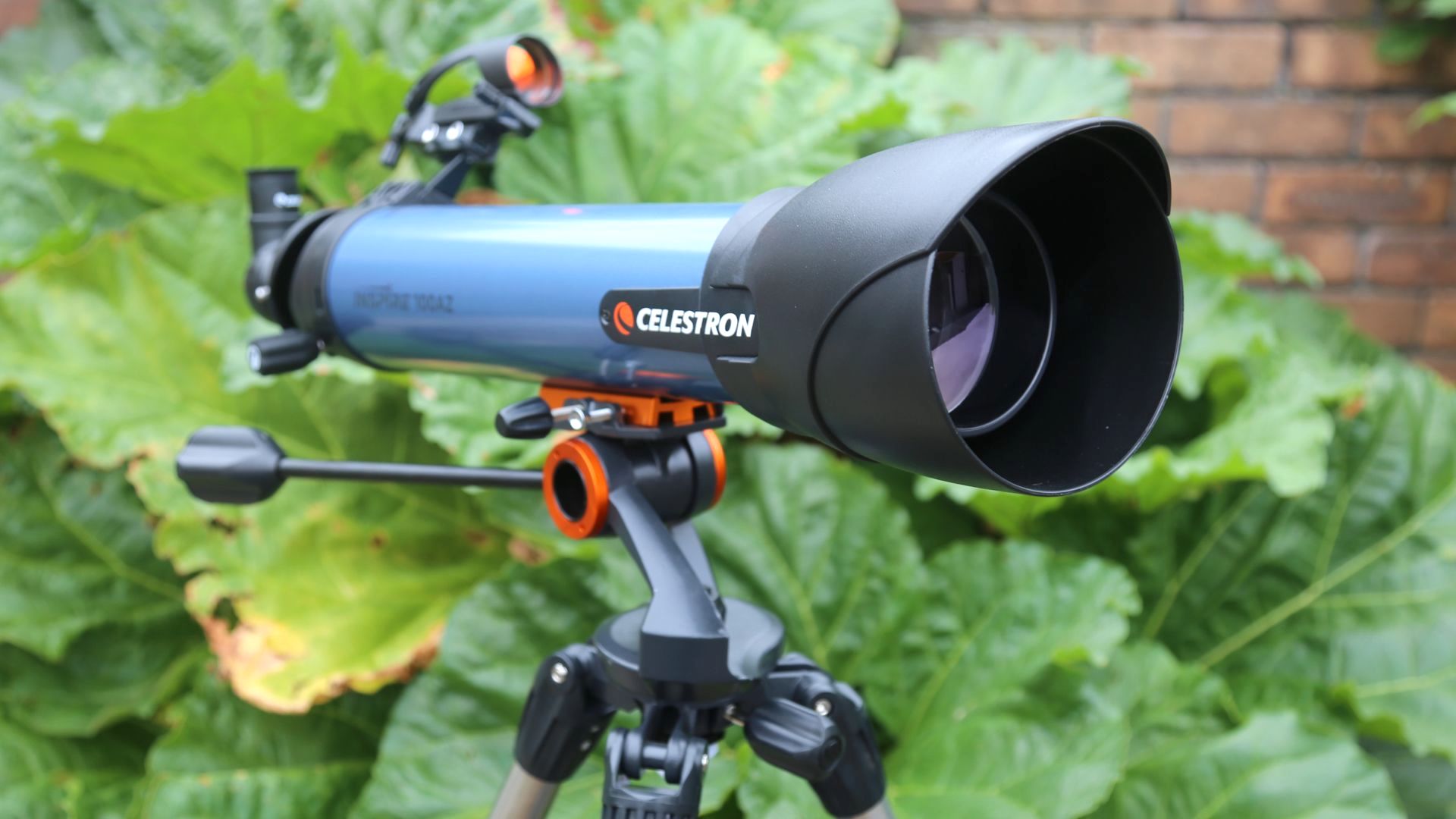
If you ever fancied having a go at astrophotography then the Celestron Inspire 100AZ is a good place to start. Using the power of the camera in your smartphone and a unique lens cap design it's possible to capture great images of the moon and planets through its good quality optics. A great all-rounder for observing both the solar system and the deep sky, the Celestron Inspire 100AZ makes for a good value beginner’s telescope.
-
+
Good all-rounder
-
+
Smartphone photography possible
-
+
True colour views
-
+
Great value
-
-
Lacks fine hand controls
-
-
Low quality bearings
-
-
Solar observing not possible
Why you can trust T3

The Celestron Inspire 100AZ telescope easily slides into our best beginner telescopes. At its core a rather basic refractor telescope with a 4-inch aperture, it's the most at home when viewing the moon and planets. However, with just enough aperture to glimpse the deep sky beyond, it makes for a good starter telescope. That goes double because it also comes with a novel smartphone mount built into the lens cap on the telescope that enables some simple astrophotography. However, that's not the only extra feature on the Celestron Inspire 100AZ.
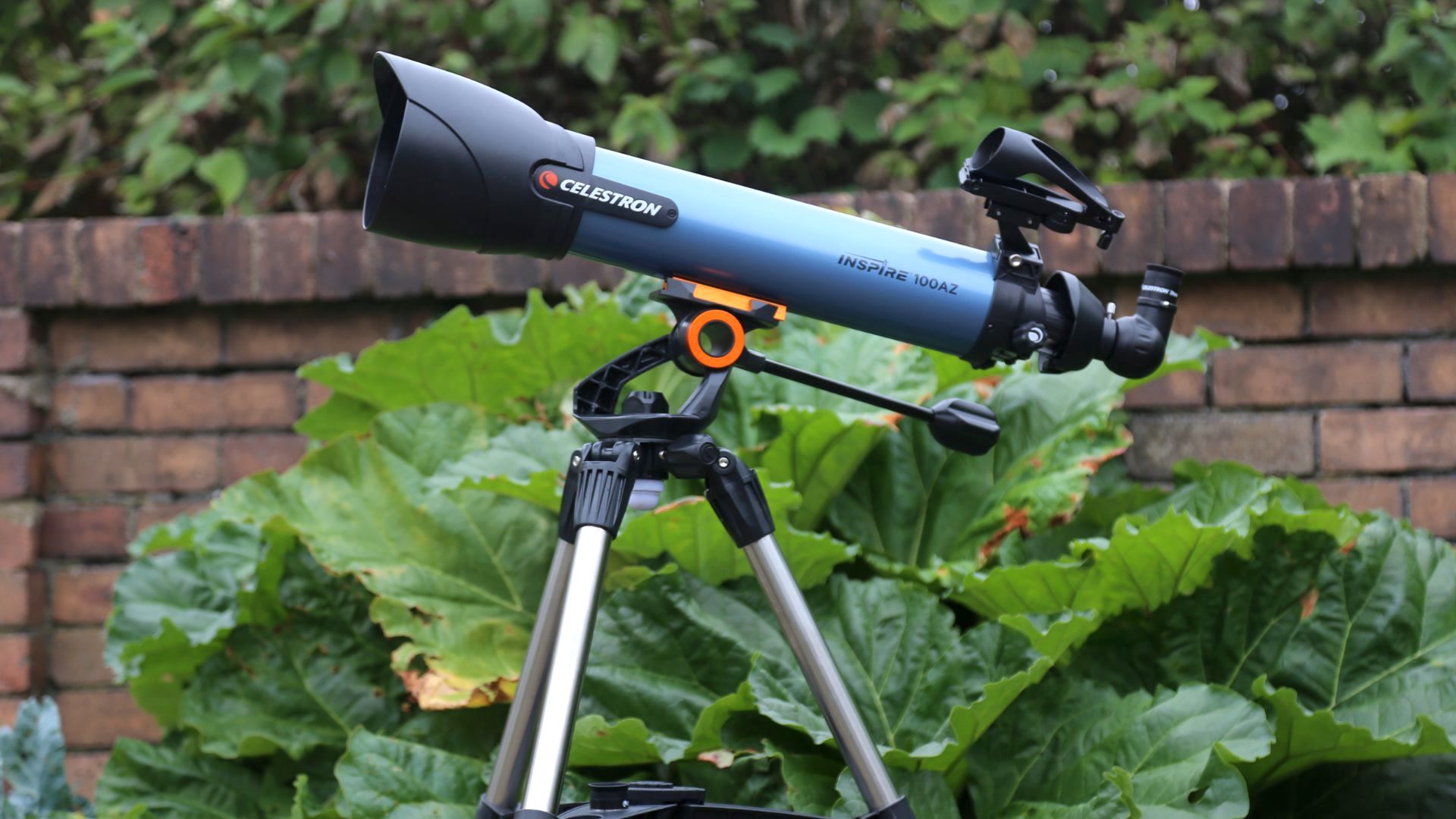
Celestron Inspire 100AZ telescope review: price and release date
The Celestron Inspire 100AZ originally went on sale in 2017 and costs in the region of $360 / £249 / AU$600. It’s the biggest telescope in Celestron’s Inspire line-up of refractor telescopes for beginners. A 2.7-inch version, which is known as the Celestron Inspire 70AZ, is also available that costs about $190 / £199 / AU$520 while a 3.1-inch version, the Celestron Inspire 80AZ, sells for around $270 / £210 / AU$570.
Celestron Inspire 100AZ telescope review: features and what’s new
The Celestron Inspire 100AZ is essentially a short practice telescope of fairly standard optical quality but with a decent build and some unique extra features. The most unexpected feature is, of course, its built-in smartphone adapter. It's actually part of the dust cap that you place on the front of the telescope's optics when it's not in use.
The smartphone adapter is not an example of high technology. In fact, it's a little more than a plastic lens cap with a hole in the middle. All you do is place your smartphone’s camera out of that hole and then hold your smartphone in position using a number of elasticated bungee straps attached to the dust cap.
Celestron Inspire 100AZ telescope: specs
Optical design: Refractor
Aperture: 4-inch/100 mm
Focal length: 26-inch/660 mm
Focal ratio: f/6.5
Eyepiece focal length: 0.8-inch/20 mm (33x) and 0.4-inch/10 mm (66x)
Total kit weight: 20 lbs./9.07 kg
Mount type: Alt-azimuth
Something the Celestron Inspire 100AZ has that many beginner’s telescopes lack is a panning handle, a protruding stick that can be used to move the telescope left and right. It also comes with a rather large, but lightweight tripod with an accessory tray towards the top. It's a very basic accessory tray, without much room to put anything at all, though it does have custom spaces to put eyepieces. Of course, such things are difficult to find in the dark. Cue the Celestron Inspire 100AZ’s novel red light system, which illuminates the eyepiece holders in night vision-friendly red light at the touch of a button. It's a nice feature, though it's actually little more than a low-cost red light torch that you can insert into the top of the tripod. You can also remove it and use it away from the telescope.
The StarPointer Pro red-dot finder provided with the Celestron Inspire 100AZ is excellent. A bullseye-style device, it doesn’t magnify the sky at all, which actually makes it easier to use. It’s simple to align with the telescope using a couple of knobs while it’s also possible to nudge its brightness up and down. The Celestron Inspire 100AZ ships with both 10mm and 20mm Kellner eyepieces, which offer 66x and 33x magnification, respectively. It’s the latter that’s the standout, not just because it’s much easier to locate targets with, but it gives much sharper images.
In the box is also a code to download some planetarium software called Celestron Starry Night Basic Edition, but it doesn't integrate into the control system for this telescope in any way.
Get all the latest news, reviews, deals and buying guides on gorgeous tech, home and active products from the T3 experts
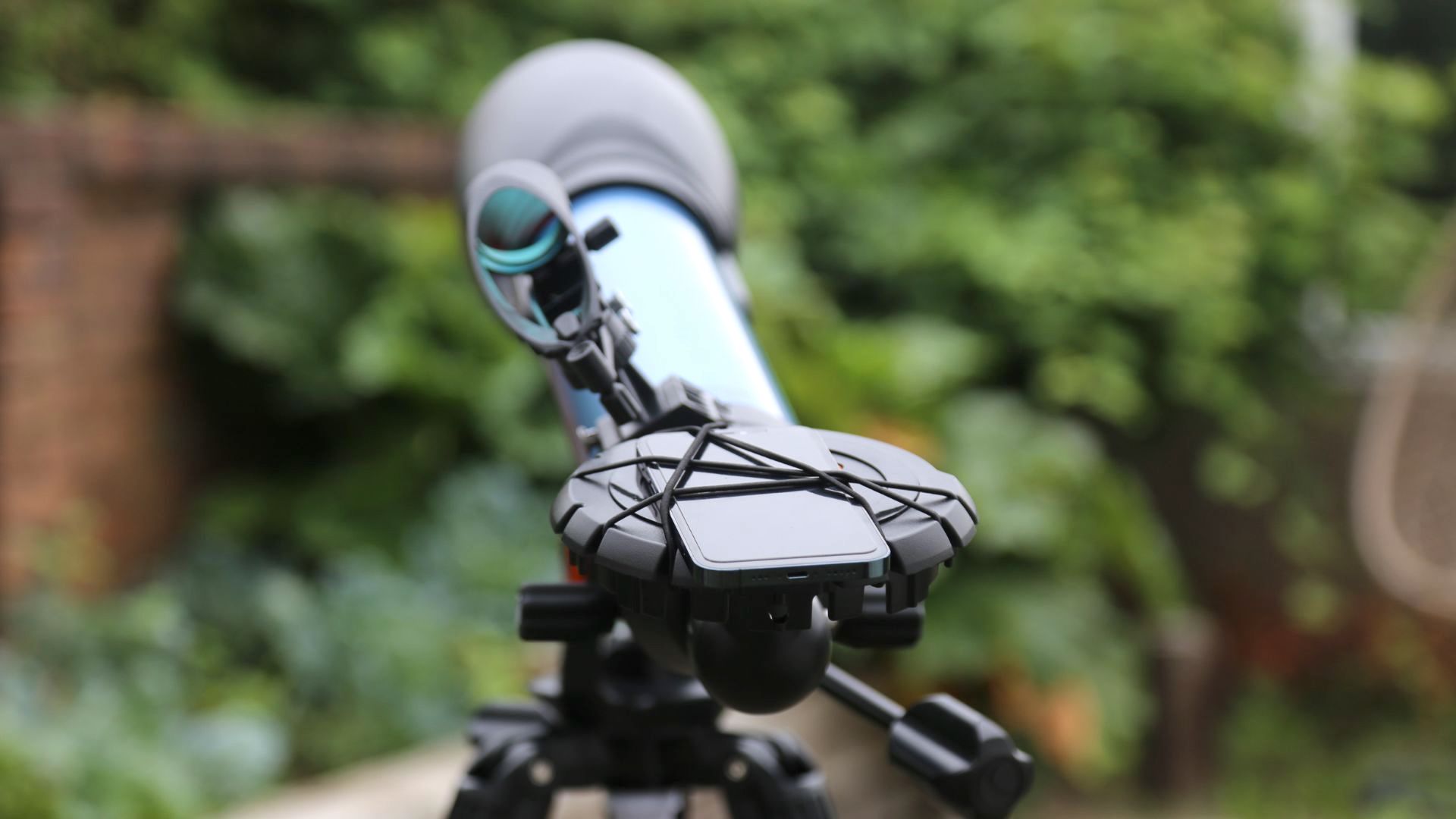
Celestron Inspire 100AZ telescope review: set-up and use
It took me about 45 minutes to construct the Celestron Inspire 100AZ out of the box. It wasn’t difficult and I didn't really need an instruction booklet, though fitting the panning handle required a little precision. The optical tube itself is a glossy metallic blue. It attaches to the tripod thanks to a Vixen-style dovetail bar. It's easy to attach, as is the 90° image diagonal, which makes sure the eyepieces point upwards, making it much easier to view objects immediately above the telescope. However, this telescope’s bearings suffer from a slight stiffness and lack of precision, so pinpointing targets in the night sky takes some work.
The smartphone holder provided in the box is actually really easy to use, though the process involved is a little long-winded. The problem is that the telescope's eyepiece needs to be used first to locate an object. With that done it’s then necessary to remove it from the telescope and insert it into a tube on the back of the dust cap behind the smartphone’s camera. It's not difficult to do, but there are a few small screws. Consequently, trying to get it all done before the object drifts out of the field of view can be tricky.
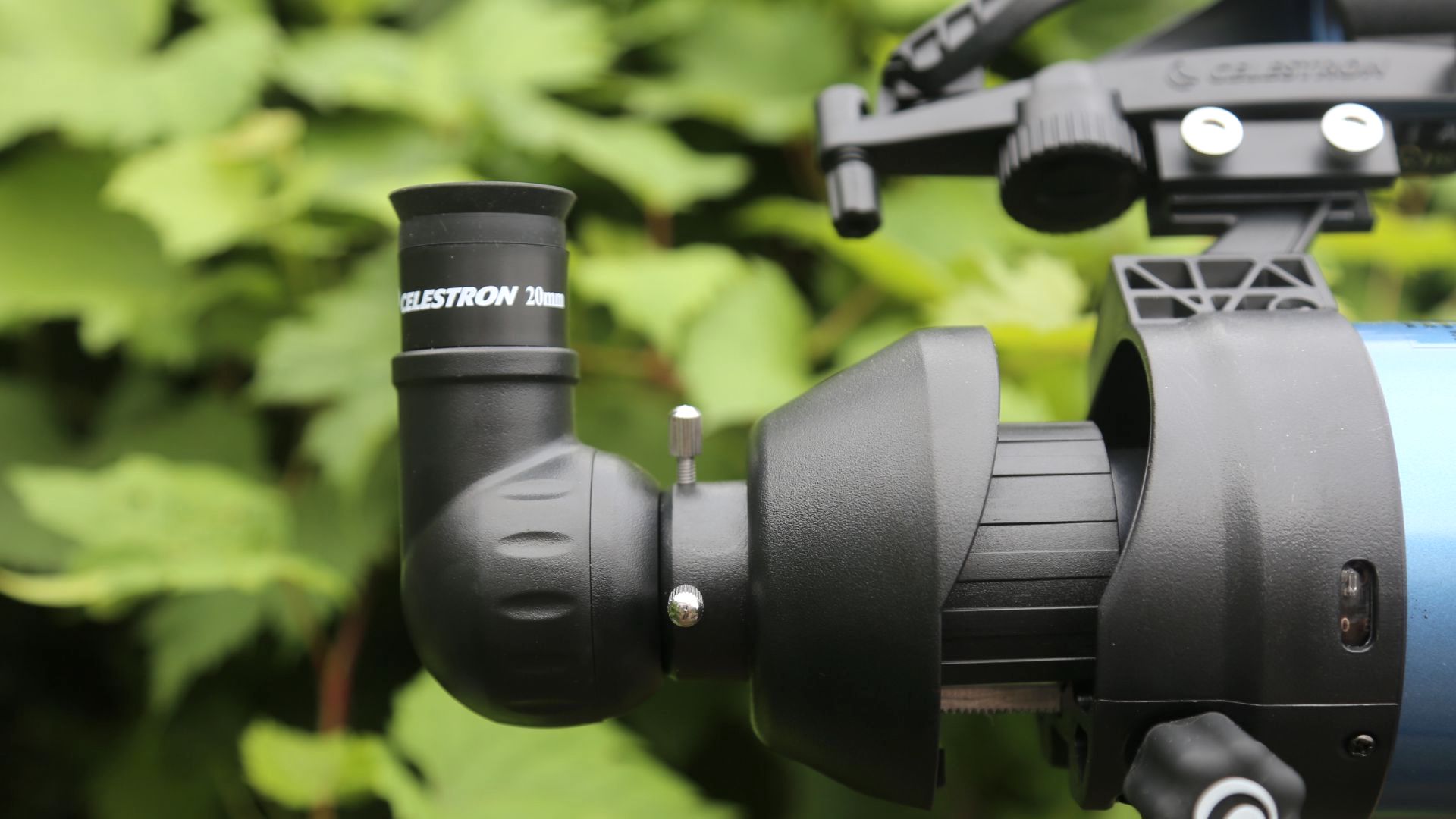
Celestron Inspire 100AZ telescope review: performance
The Inspire 100AZ isn't just about astrophotography, but it’s not as able with deep sky objects as it may appear. A reasonably short focal length of 660mm makes this achromatic refractor primarily ideal for observing targets within our solar system, but its f/6.5 focal ratio is just enough to get eyes-on with some reasonably faint deep-sky objects.
During my tests I pointed the Celestron Inspire 100AZ at Venus, Jupiter and Saturn, as well as the moon moving through its many phases. It is possible to see a little chromatic aberration in the form of a purplish-yellowish line around bright objects, but it's nowhere near as distracting as on cheaper telescopes. Manually locating and then fixing on to much dimmer, harder to find objects is a challenge when using the Celestron Inspire 100AZ.
That's because its bearings are a little stiff and imprecise, though with a little practice it’s possible to get good views of the star clusters and galaxies. However, the darker the sky, the better.
One slight drawback of the Celestron Inspire 100AZ is that the front of the telescope has a small peaked hood, principally to keep out ambient light. However, it interrupts the smoothness of the objective lens and therefore makes it very difficult to fit a solar filter on the front. It’s consequently impossible to use the Celestron Inspire 100AZ for any kind of solar viewing, including of partial solar eclipses.
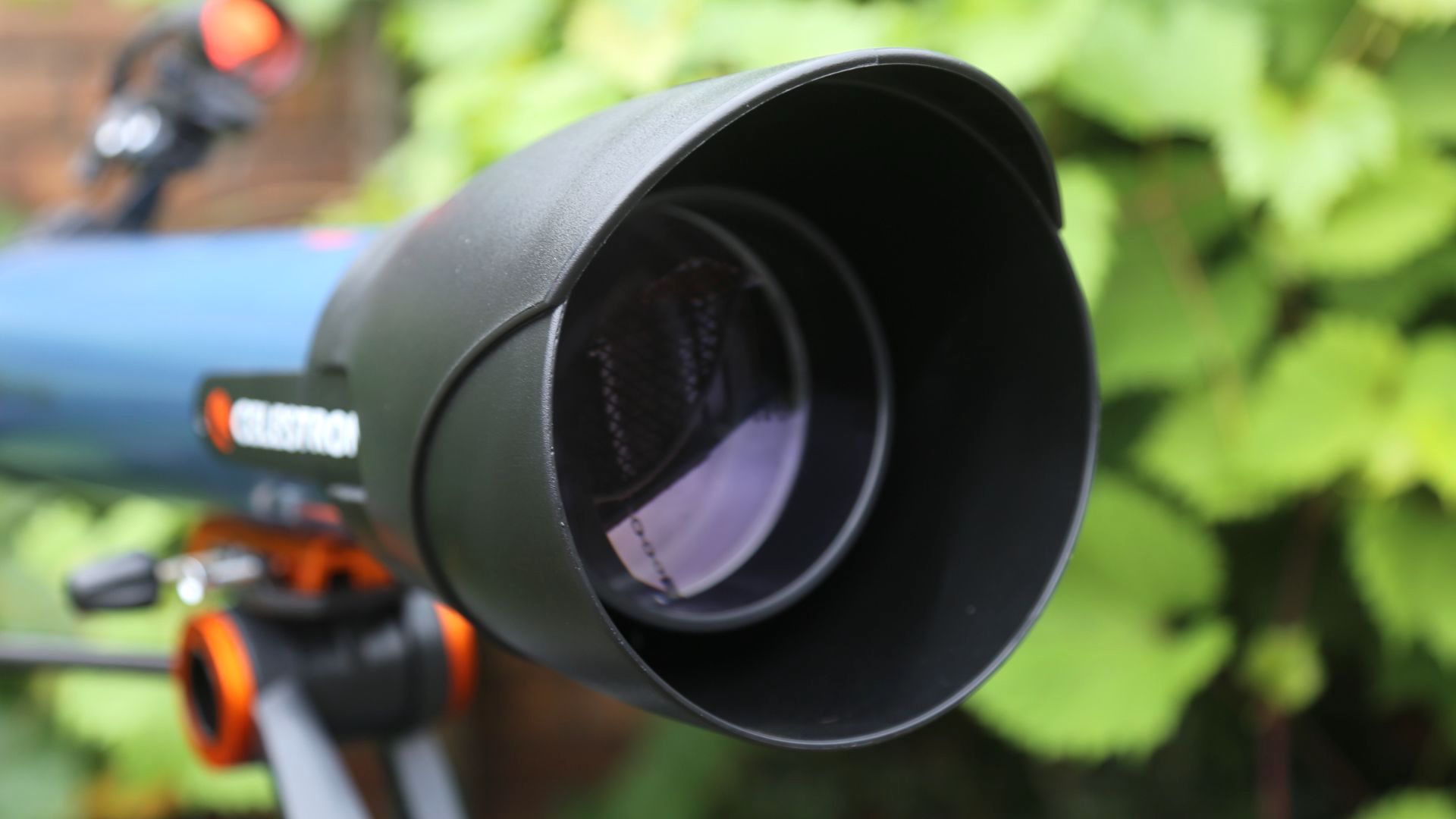
Celestron Inspire 100AZ telescope review: alternatives to consider
The Celestron Inspire 100AZ telescope it's an entirely manual telescope that you have to move yourself. This can be rather tricky if you're just starting out in stargazing and don't know the positions of the main bright objects in the night sky. For a helping hand head for the Celestron StarSense Explorer DX 130AZ, a 5.1-inch Newtonian reflector telescope that comes with Celestron’s excellent StarSense app, which works like a sat-nav for the night sky. For something even smaller than the Celestron Inspire 100AZ head for the Celestron AstroMaster 102AZ, which gives ultra-bright views of the moon, Saturn's rings and Jupiter's moons.
Celestron Inspire 100AZ telescope review: overall thoughts
The Celestron Inspire 100AZ makes an excellent beginner’s telescope. It benefits from a decent build and has both optical quality and aperture to get good views of both solar system and some deep sky objects, though its bearings are a little imprecise. What we really love about the Celestron Inspire 100AZ is its innovative dust cap that doubles as a smartphone holder as well as the novel red light illumination of its eyepiece tray. Both of those features are useful, though the smartphone holder benefits from a dedicated eyepiece for the task.
Jamie is a freelance journalist, copywriter and author with 20 years' experience. He's written journalism for over 50 publications and websites and, when he's not writing, spending most of his time travelling – putting the latest travel tech through its paces.
